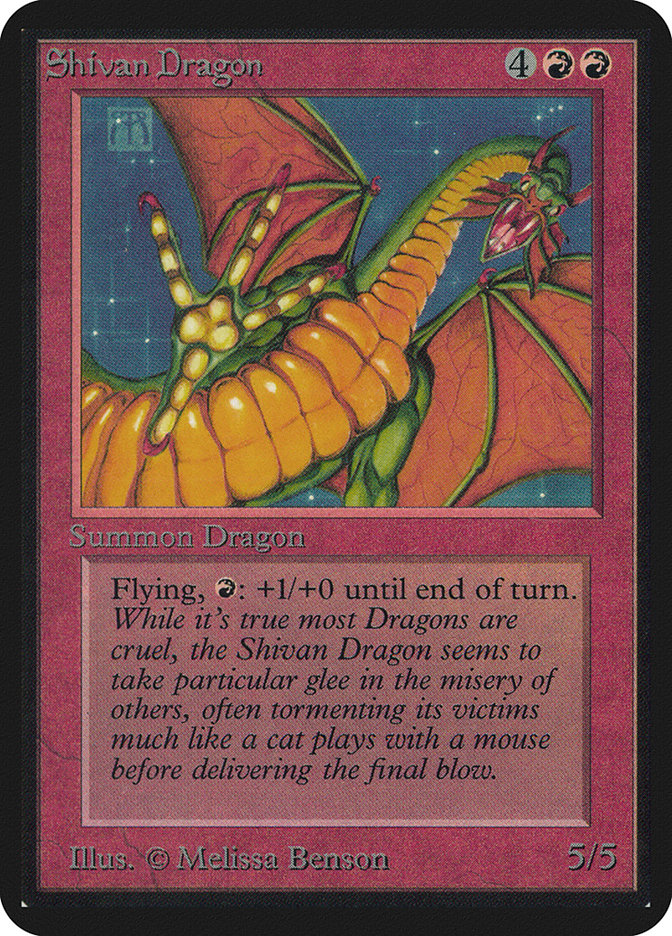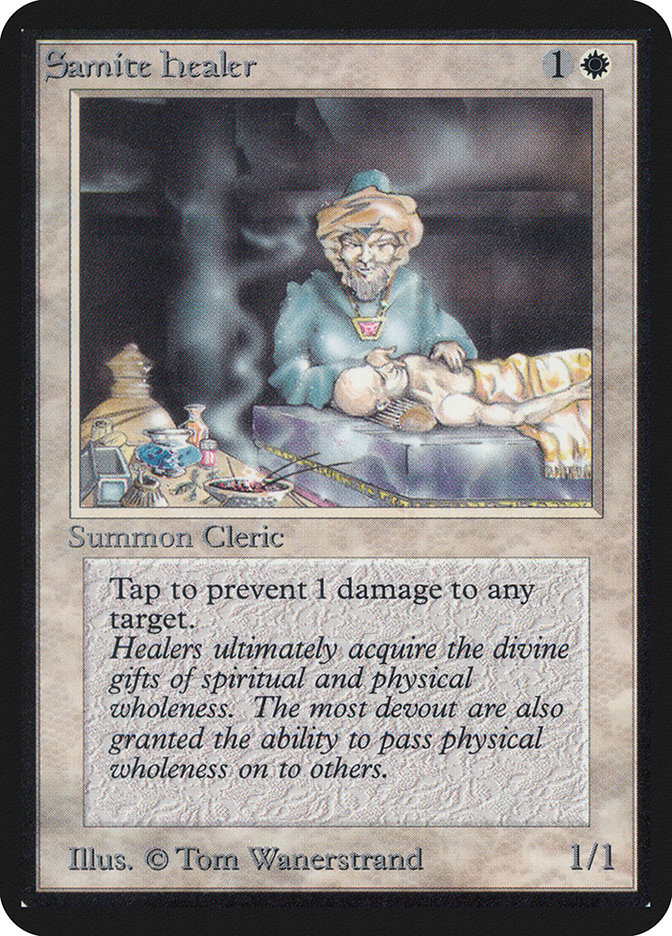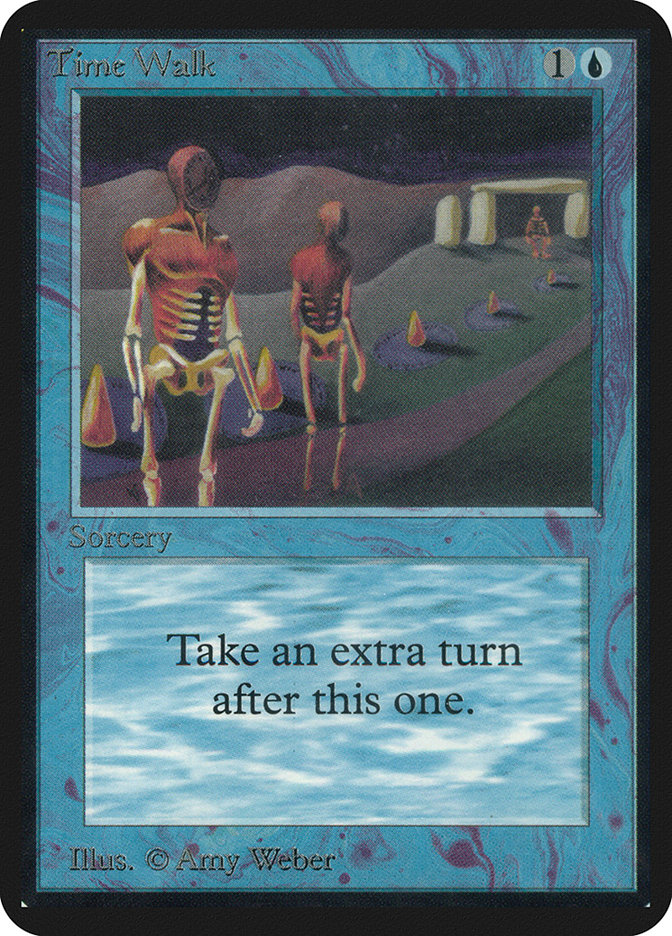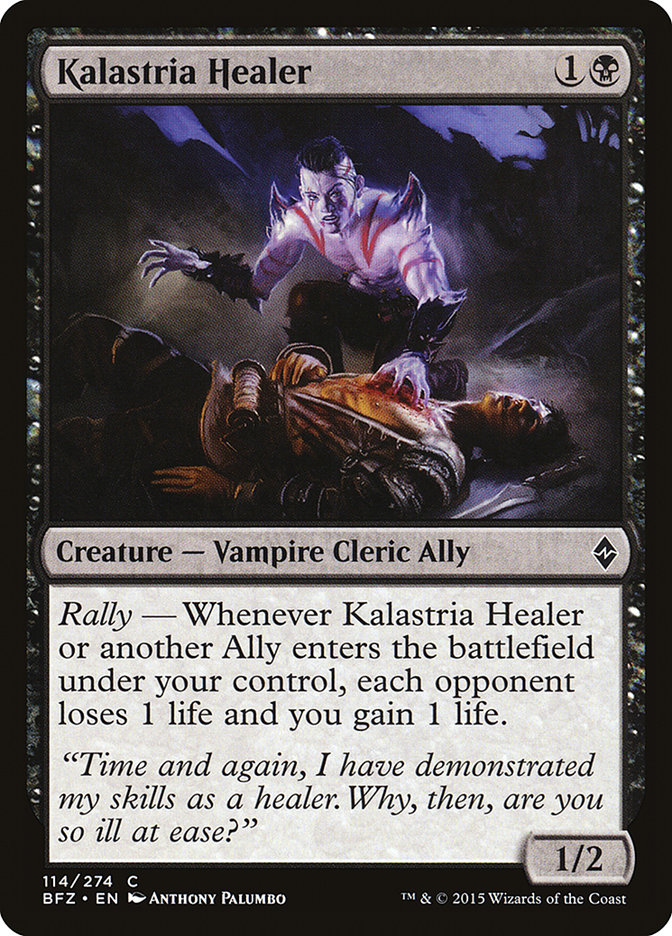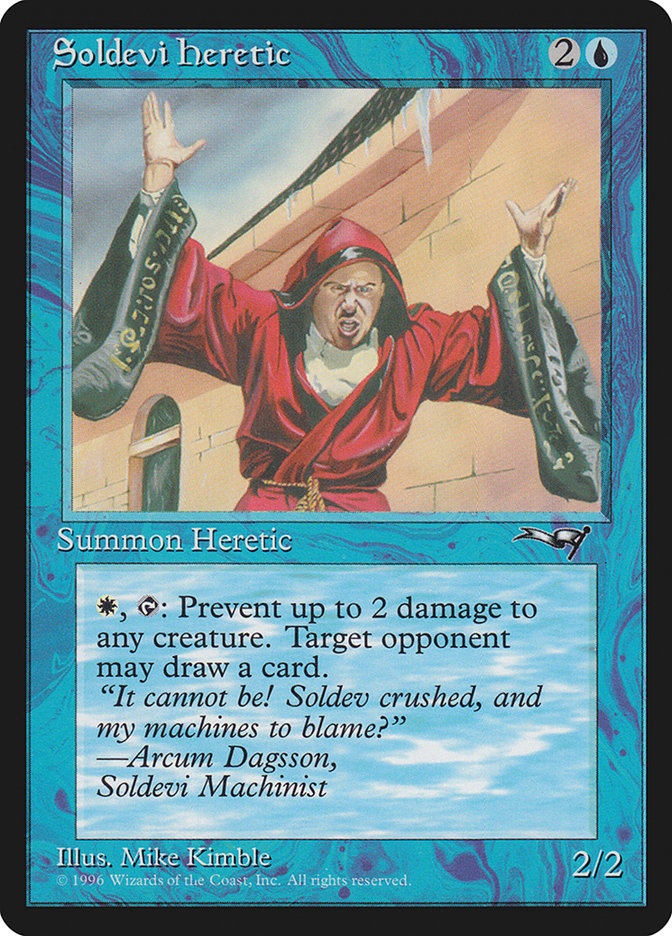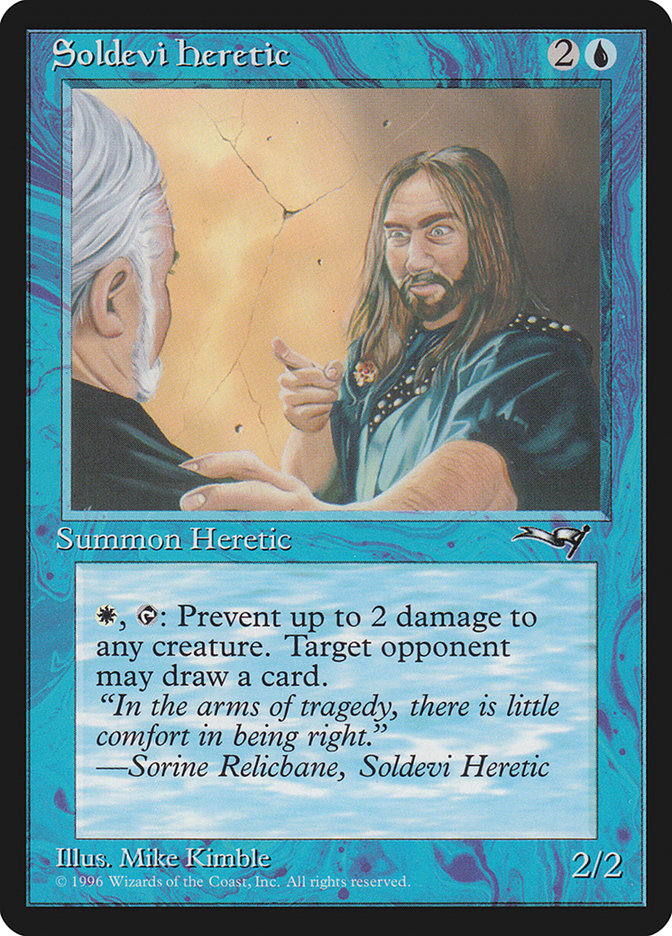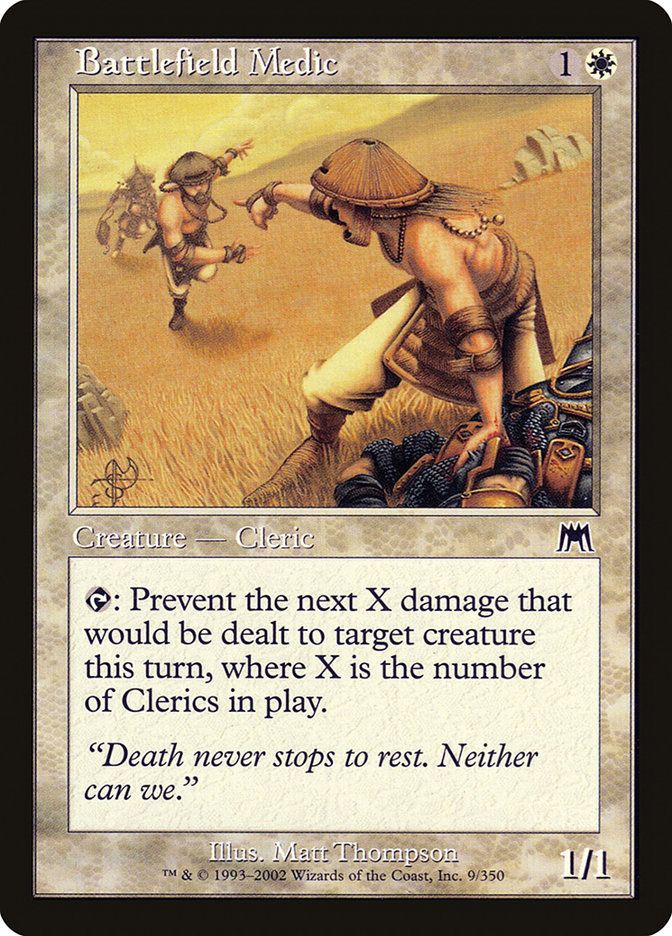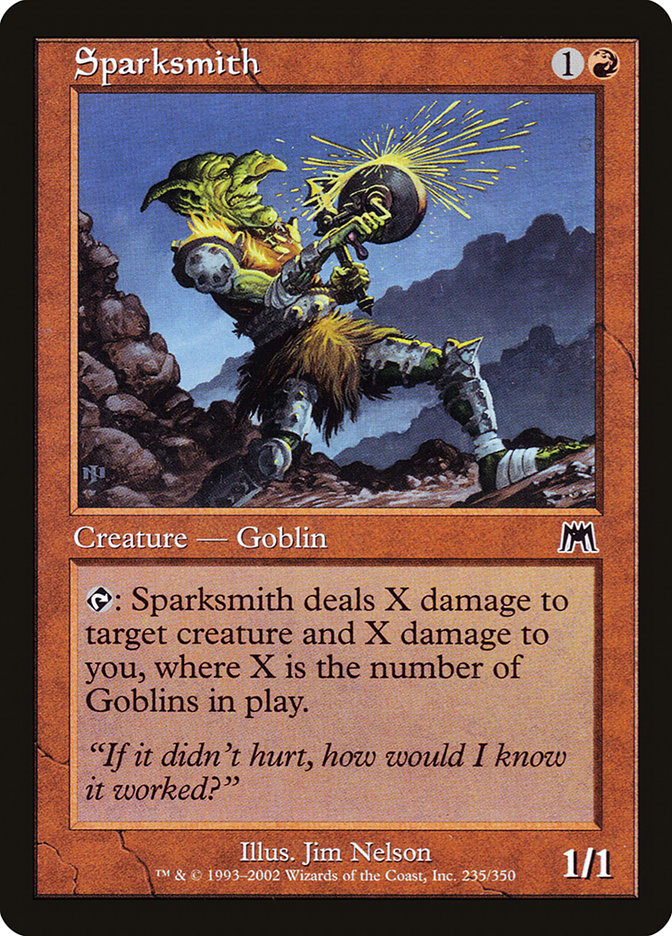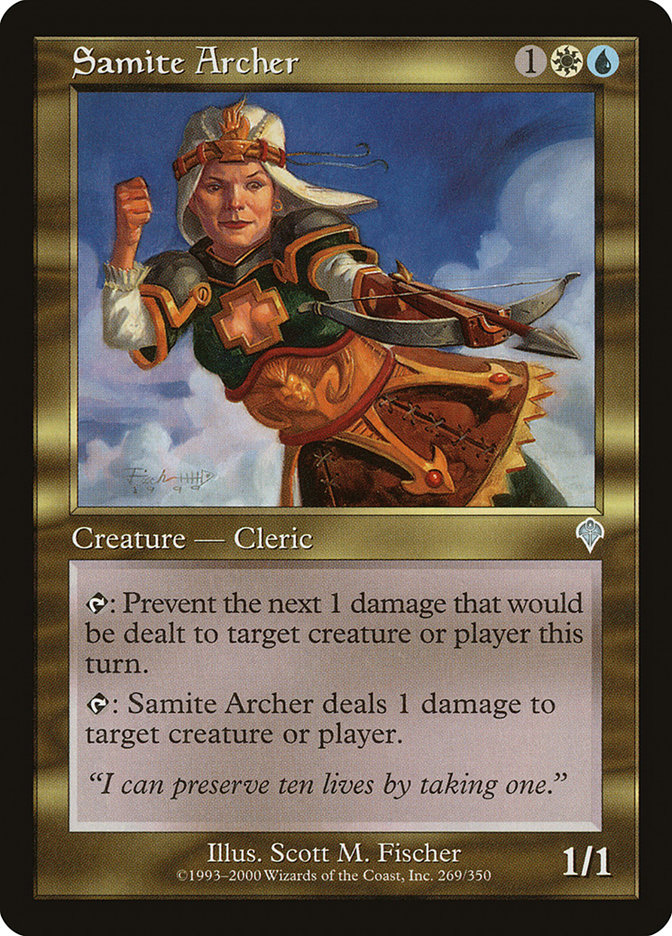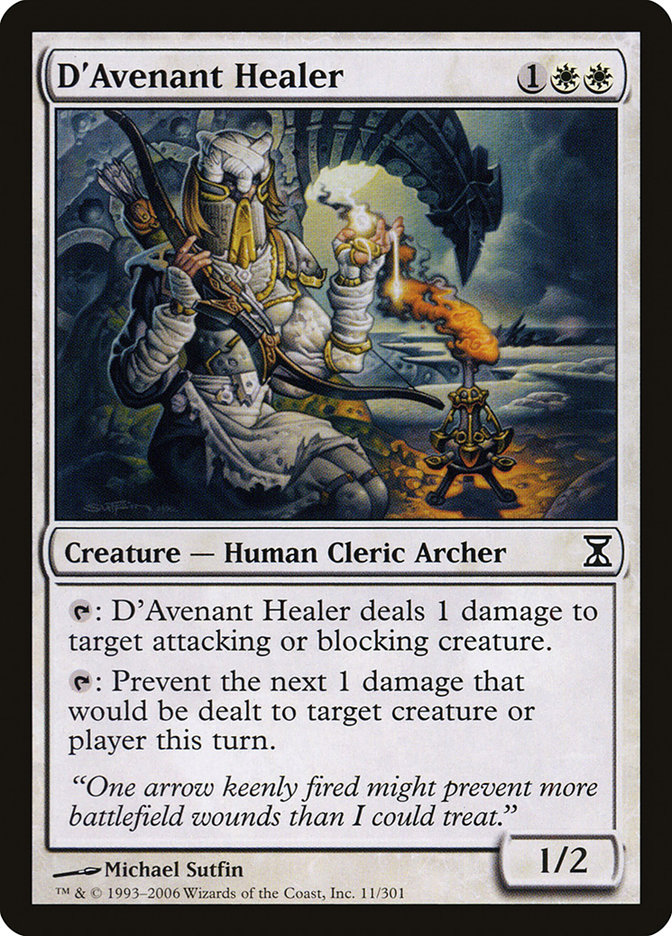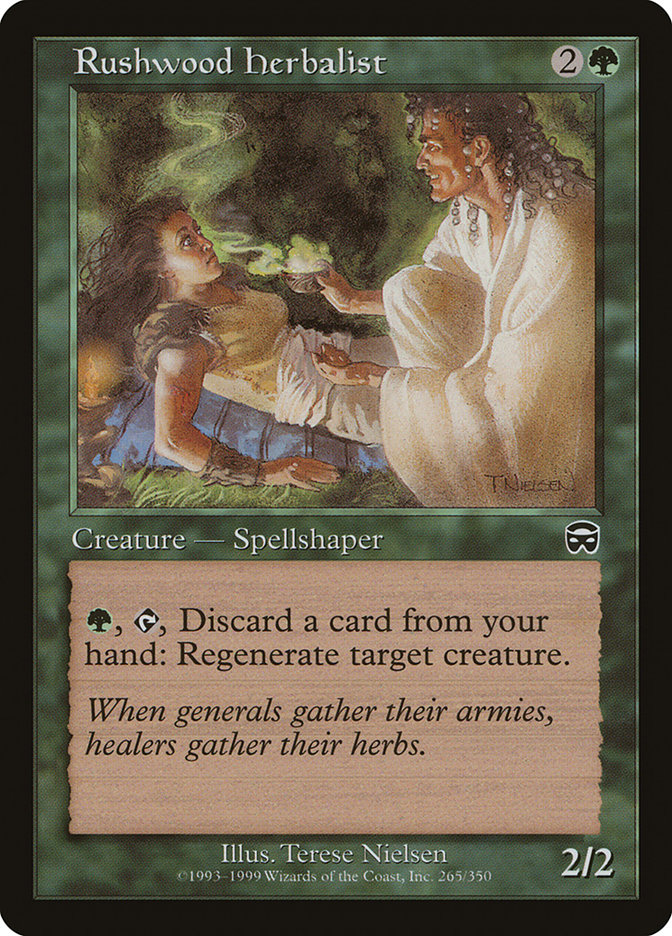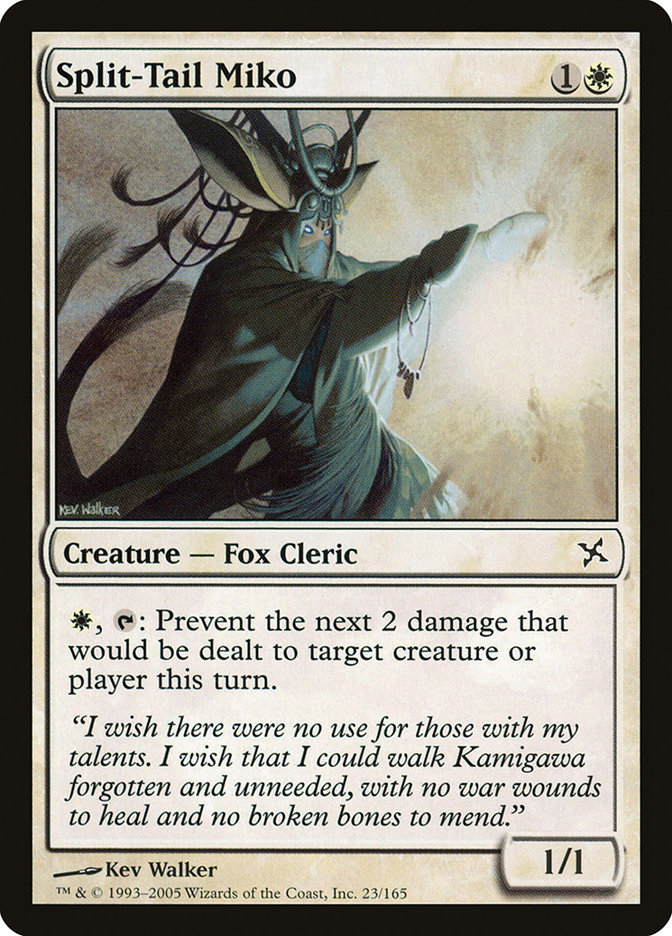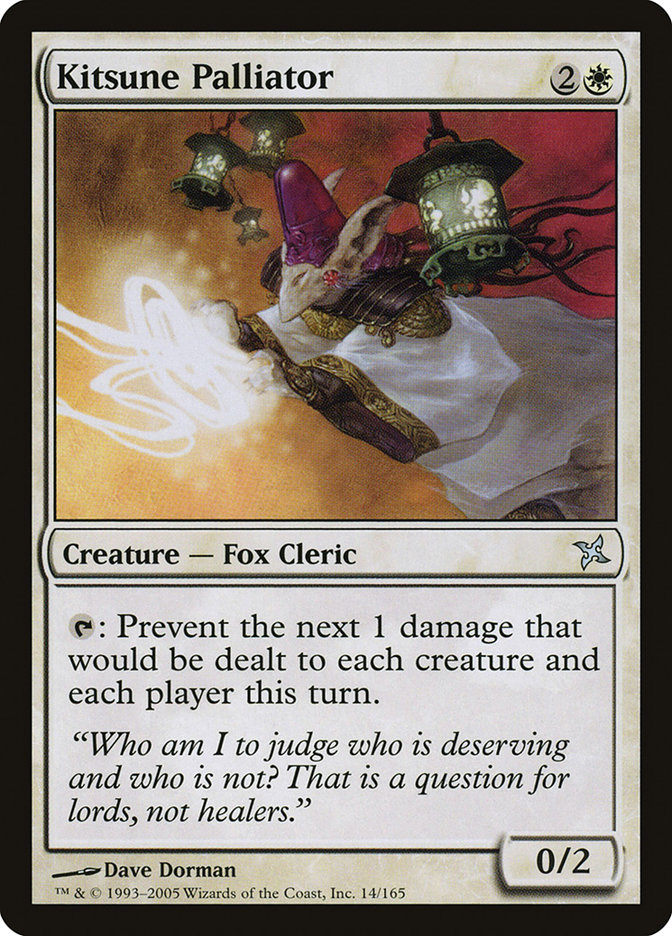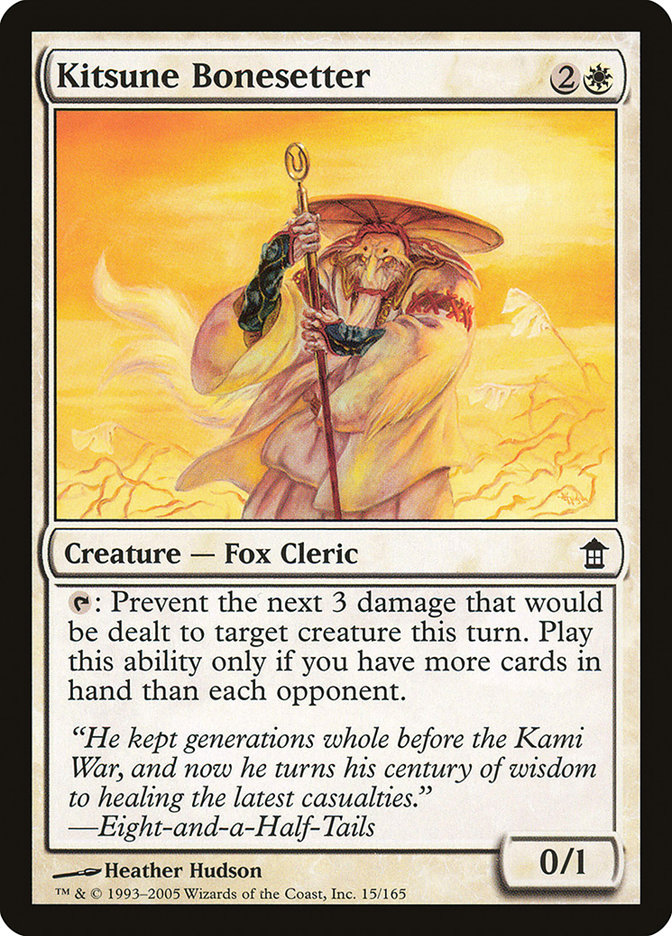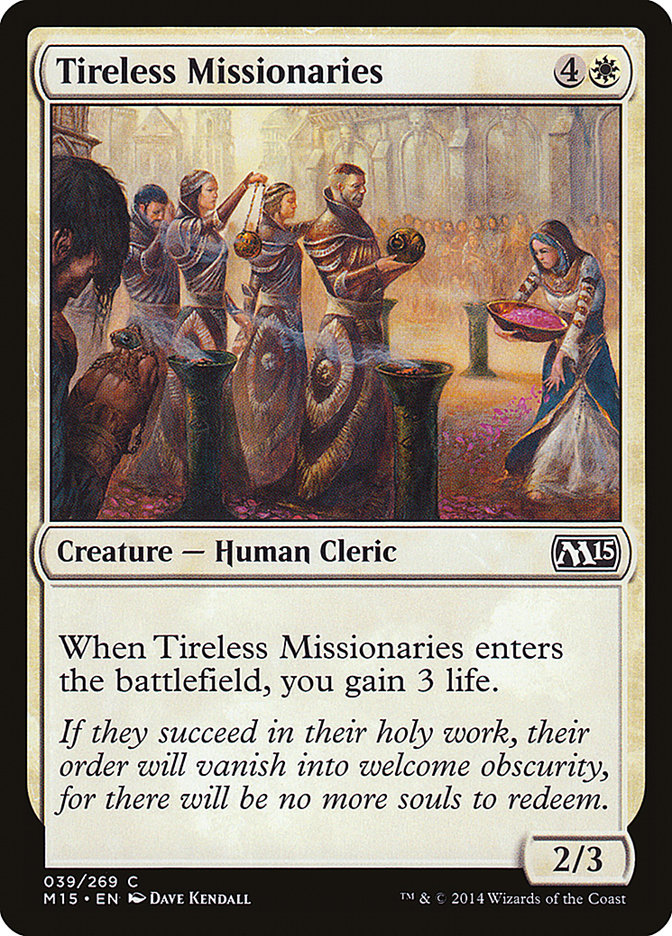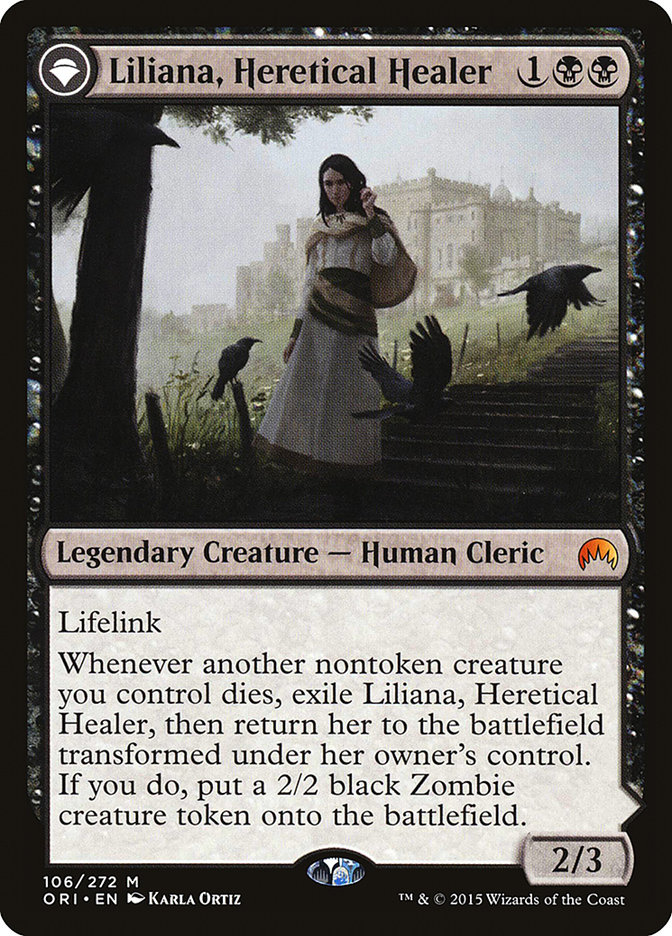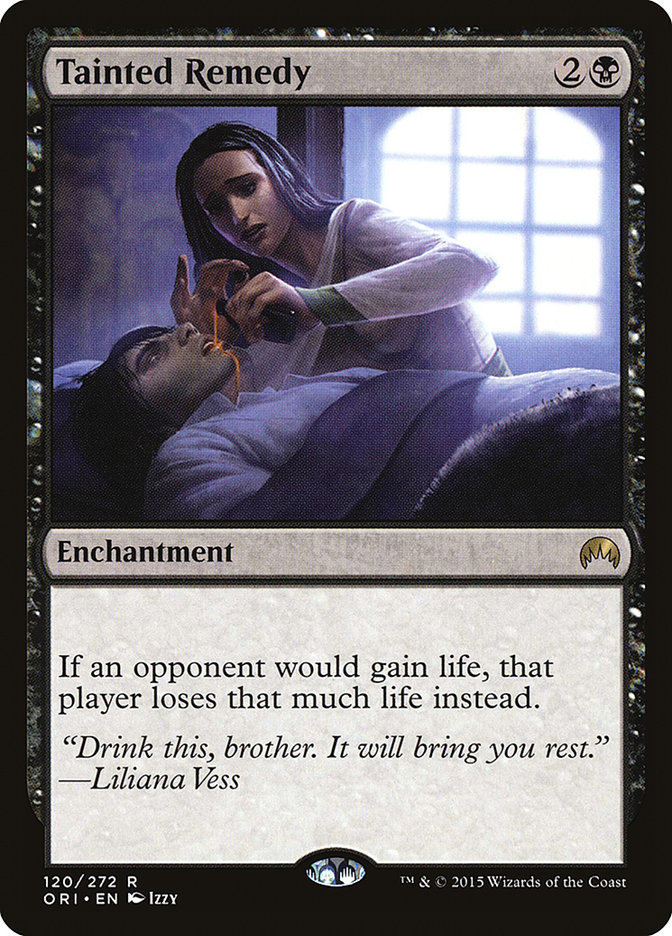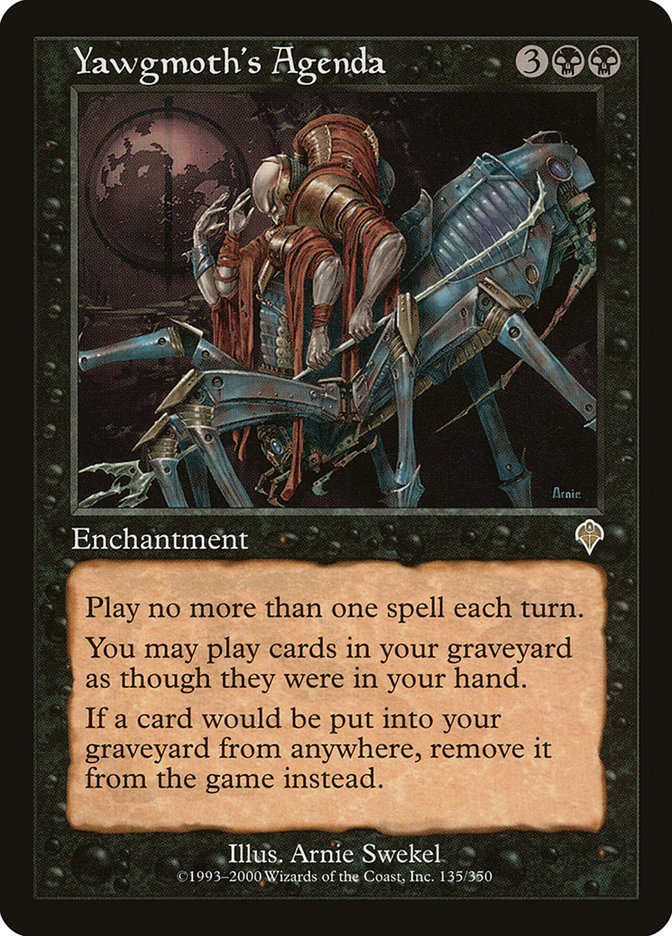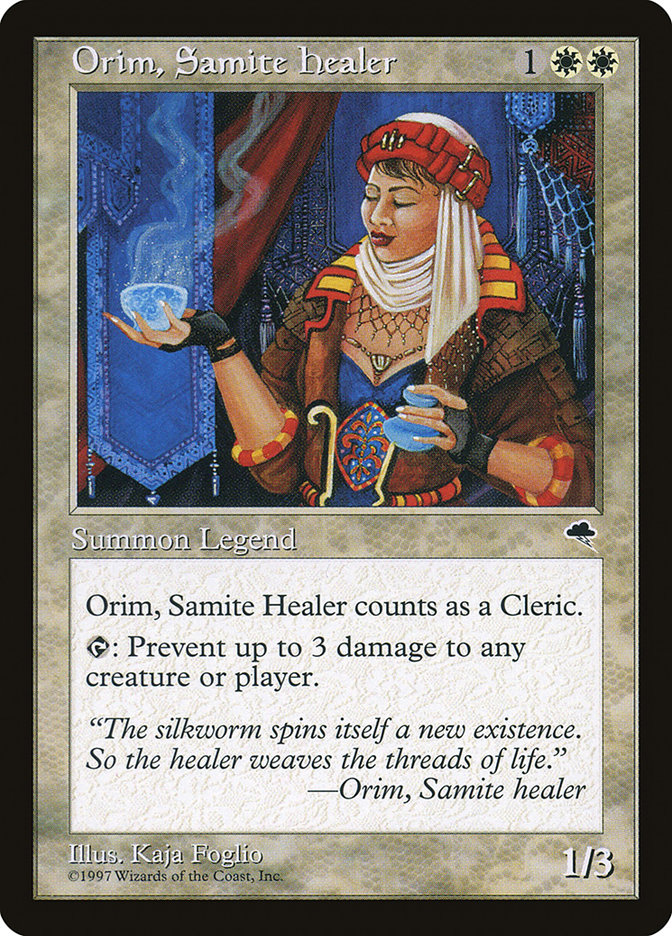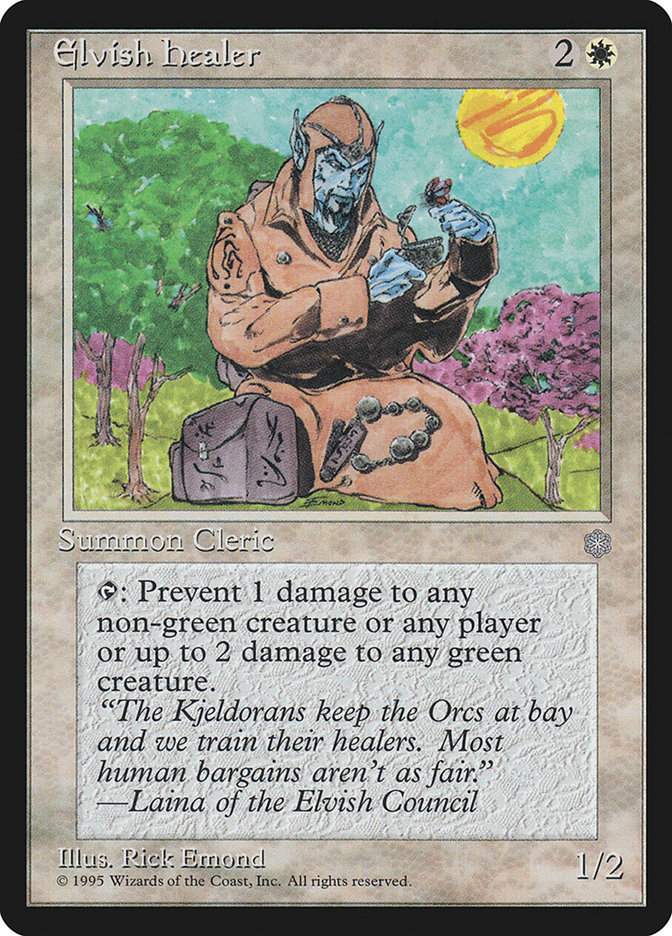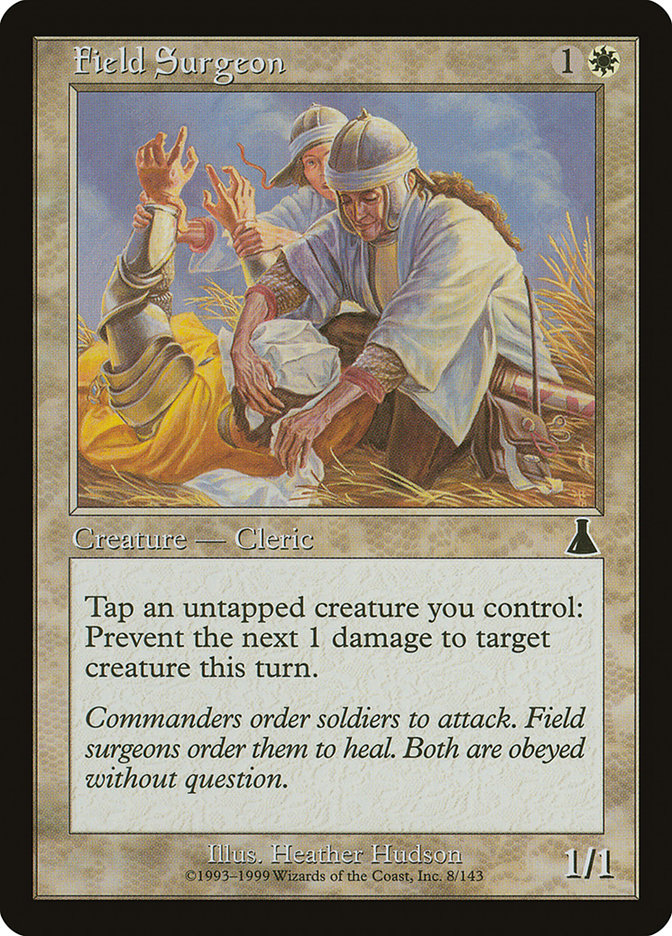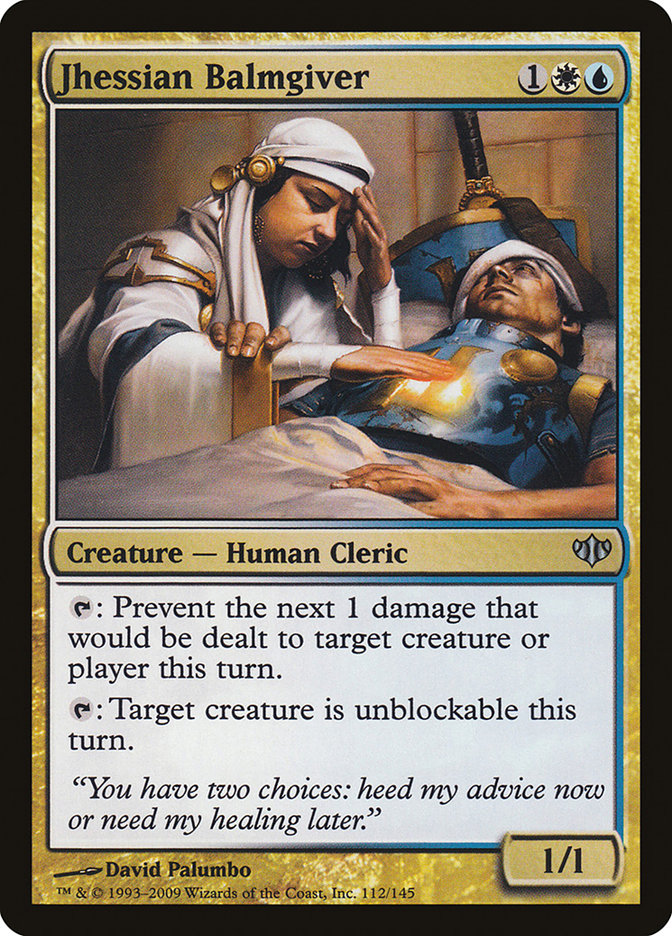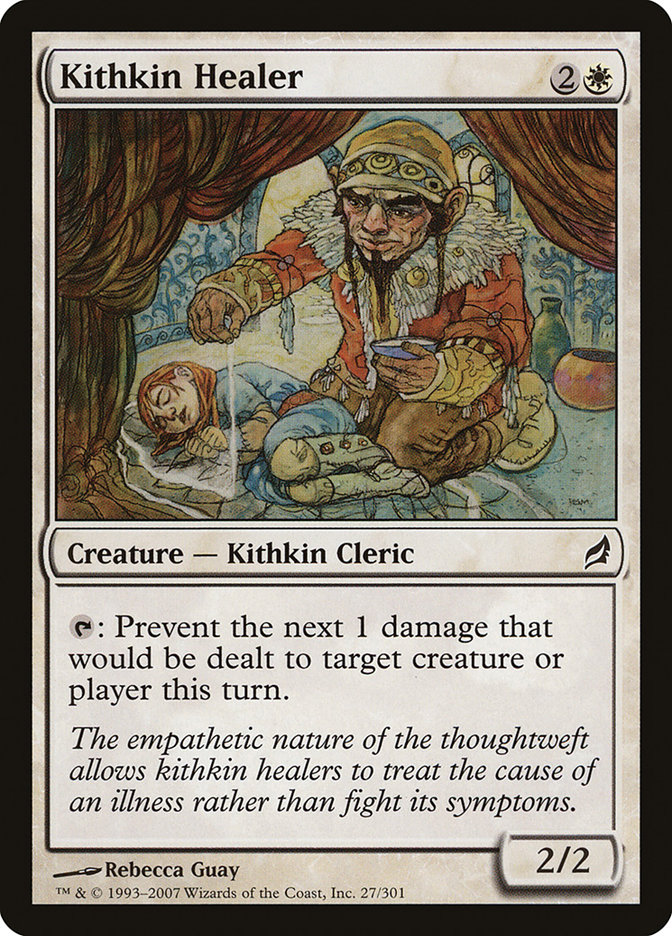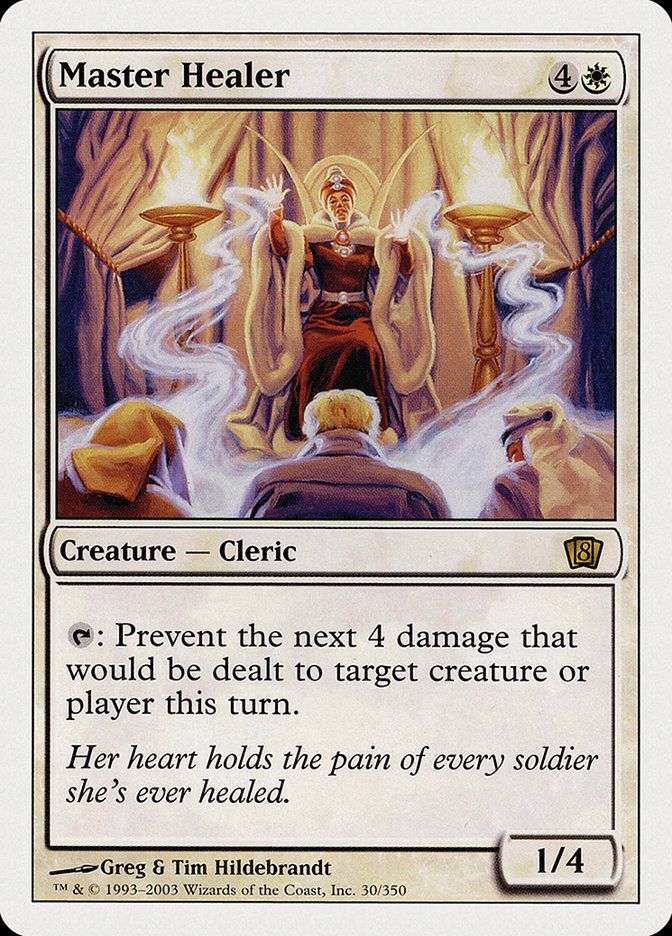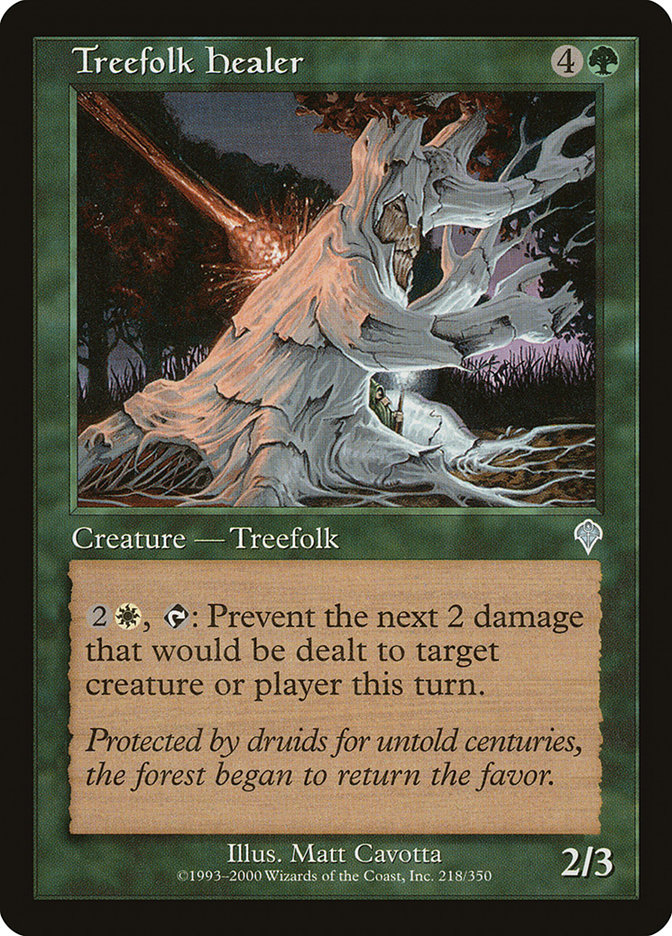“Purge me with hyssop, and I shall be clean: wash me, and I shall be whiter than snow.” — Psalm 51:7 (KJV)
From the earliest days of Magic, the healer archetype has been part of the game. Even in Limited Edition Alpha, the very first printing, the Samite Healer stood tall on the same battlefields where Shivan Dragons roamed the skies and Time Walks whizzed overhead.
“…and then he said, ‘Rarity will keep decks from being overpowered!’ Ha-ha!”
Some healers sling spells. Others use herbs. From cards no Limited deck would touch to key Draft and even Constructed players, healers in all their forms are well-represented across Magic’s history. But I’m not here to talk about competitive playability; I’m all about the flavor of “healer-ness” in art and text.
After giving the original Samite Healer an honorary place beyond the rankings, here are my picks for the Top Ten(-ish) Healers of Magic.
#10 – Kalastria Healer (Battle for Zendikar)
Outside of certain circles (I’m looking at you, Ally Commander player with a Patriarch’s Bidding subtheme), Kalastria Healer will soon be forgotten. That’s a pity, because it tells a story with just as much application on Earth as the wilds of Zendikar: the offputting helper.
Kalastria Healer is there to help. His next meal is far from his mind. Yet who would not feel fear while lying injured and weak with a vampire standing nearby? He’s like a male gynecologist; no matter how professional he is, some would-be patients will never be comfortable with him, and I don’t blame them.
#9 – Soldevi Heretic (Alliances)
One of the longest-running tropes in Magic is “life vs. machine.” From the Brothers’ War between Urza and Mishra all the way back in Antiquities to the horrors of Phyrexia and the bizarre creations of Esper, Magic has echoed the fears of soul-crushing technology that are at least as old as the Industrial Revolution and the Luddites.
In the nation of Soldev, on the continent of Terisiare, on the plane of Dominaria, the artificer Arcum Dagsson thought he could control technology derived from the Brothers’ War. Like so many others who were too clever by half, he slid from elation to despair as tech-gone-wild destroyed his home.
The destruction was so shattering that even the most prominent Soldevi Heretic, one Sorine Relicbane, couldn’t even enjoy being proven correct. His Soldevi Heretic quote is one of a handful of flavor texts I’ve used to good effect in non-Magical conversation.
#8 – Battlefield Medic (Onslaught)
I remember being new to Magic and drafting a B/W Clerics deck when triple-Onslaught was the format. I thought Battlefield Medic was just awesome. I got to prevent five damage if I had five Clerics on the battlefield? Sweet!
Meanwhile, I was passing Sparksmiths because I didn’t want to deal damage to myself. Hey, I said I was new!
Onslaught was set on Dominaria, but after the plane-shattering events of Invasion block and on a remote continent called Otaria. One of the quirks of the setting is that the Plains-dwelling folk of Otaria, the Daru, tended to use woven sturdy grasses in their armor. At best the Daru looked like they were wearing slightly weird beige armor; the Battlefield Medic, an average case by contrast, looks as if he’s repurposed some of Aunt Melba’s wicker furniture.
#7 – D’Avenant Healer and Samite Archer (Time Spiral / Invasion)
The D’Avenant Healer is remarkably similar to an earlier card, Invasion’s Samite Archer, which could heal but also could tap for damage. (Their flavor texts go beyond “remarkably” similar into “suspiciously” territory.)
While the Samite Archer presumably started as a Samite Healer and shifted to sniper mode, the D’Avenant Healer comes from a tradition of D’Avenant Archers and has added some kind of funky incense healing to the repertoire.
Taken together, Samite Archer and D’Avenant Healer represent the “take a life to save many more” school of thought. On Earth they’d be giving up noncombatant status, but neither the (old-school) Phyrexians nor the hostile forces of post-apocalyptic Dominaria seem keen on such niceties, so why not?
#6 – Rushwood Herbalist (Mercadian Masques)
On the plane of Mercadia, while healing magic is known among the white-aligned Cho-Arrim (including Cho-Manno, Revolutionary, their leader), others have different traditions. The Rushwood Herbalist, a green-aligned Human, is part of the Masques Block “Spellshaper” cycle and seems to use herbs instead.
At first glance this card doesn’t look like much, and really, it isn’t. The effect isn’t that great, the card was Limited fodder, if that, and even the flavor text is bland. On the other hand, the art is a rare humorous offering from Terese Nielsen, from the Herbalist’s cheeky grin to the heck-no look on the patient’s face.
#5 – Frontline Medic (Gatecrash)
After a few “old and forgotten” goodies in a row, it’s back to a card competitive players might remember. In 2013, Frontline Medic was printed in Gatecrash and promptly made heads turn with impressive results right out of the gate.
Creatures (31)
- 4 Champion of the Parish
- 4 Avacyn's Pilgrim
- 4 Mayor of Avabruck
- 3 Thalia, Guardian of Thraben
- 3 Huntmaster of the Fells
- 3 Restoration Angel
- 4 Silverblade Paladin
- 3 Nearheath Pilgrim
- 3 Frontline Medic
Lands (23)
Spells (6)

Wherever there were low-to-the-ground creature decks, the Frontline Medic was there to keep the weenie hordes safe. No cushy cloth robes for this healer! He rocked full plate armor and a giant shield with convenient storage for vials of restorative medicine on the inside.
He didn’t just team up with Innistrad’s humans, either. Late in 2013, Ben Lundquist got the Frontline Medic together with Soldier of the Pantheon and a few other select Theros goodies for an Open victory.
Creatures (26)
- 4 Dryad Militant
- 4 Precinct Captain
- 2 Azorius Arrester
- 4 Boros Elite
- 4 Frontline Medic
- 4 Daring Skyjek
- 4 Soldier of the Pantheon
Planeswalkers (3)
Lands (22)
Spells (9)

#4 – Kitsune Palliator and Friends (Betrayers of Kamigawa etc.)
The plane of Kamigawa is based around pre-industrialization Japan. Aside from a few instantly recognizable features such as the Samurai and Ninja creature types, the most recognizable aspect of Kamigawa was the presence of Kitsune, rendered by Wizards as anthropomorphic foxes.
I had enough trouble picking out just one Kitsune healer that I’ve chosen to group three of them together. Note the use of more specific terms than just “healer” or “medic.” A palliator is one who eases suffering, and a bonesetter helps those who have gotten (literally) out-of-joint.
The Kitsune healers also show intriguing attitudes toward the world and their work. The Palliator heals everyone, taking no sides, while the Split-Tail Miko openly pines to live in a world where all its talent for treating war wounds is useless. There are some interesting parallels to Tireless Missionaries, among other cards.
#3 – Liliana, Heretical Healer (Magic Origins)
Ah, Liliana. She was young and innocent once. Too bad her ambition and headstrong nature led her to accidentally poison her own brother.
Whether the Raven Man is an antagonist others can experience or a mental aberration peculiar to Liliana, the mysterious tormentor who seemed to read her mind induced her downfall. Of course, Liliana herself had set up the groundwork with her dabbling in dark magic on the side.
The young Liliana is a reminder of how even those who’ve dedicated their lives to healing others can fall from the path. She kind of reminds me of another from long ago, a doctor who went far beyond easing illness in his quest for a cure: Yawgmoth.
#2 – Master Apothecary (Odyssey)
It’s one thing to have individual talent. I’ve known plenty of people who match that description. Occasionally I think I qualify.
It’s something else entirely to be able to give direction to others’ talents and bring people together.
Like a scientist who’s equally adept at conducting research and mentoring grad students, the Master Apothecary is a rare bird indeed. She can fix a patient up just as easily as any of the healers under her (she’s a Cleric and can tap herself for her own ability), but her true gift lies in making everyone around her that little bit more awesome.
It’s worth noting that Master Apothecary is part of a cycle in Odyssey, its most famous member being the Force Spike-granting Patron Wizard in blue.
Now, if Master Apothecary, for all her talents, isn’t number one, then who could be?
#1 – Orim, Samite Healer (Tempest)
Most folks don’t even know who Orim is unless they’re hardcore into old Magic lore. It’s a tremendous shame, because she’s one of the most awesome characters to emerge from Magic’s storytelling in any year.
Here’s the really short version, drawn from various sources with a refresher dose from a wiki:
Orim was a Samite Healer and a former university classmate of Hanna, Ship’s Navigator on Dominaria.
Orim sailed with the crew of the Skyship Weatherlight as their medical support, a position that required knowledge of how to heal minotaurs and goblins as well as humans.
When the crew of the Weatherlight ran into trouble on Mercadia, Orim bridged the divide between them and Mercadia’s Rebel faction, picking up water-magic and a love interest, the Rebel leader Cho-Manno, Revolutionary.
When the Phyrexian Invasion of Dominaria came, Orim found the cure for the Phyrexian plague. Her efforts helped save all sapient (and non-sapient) life on Dominaria.
And after surviving the final catastrophic battle, she checked out of Dominaria and went back to Mercadia to live out her days with her beloved Cho-Manno.
To recap, she sailed the planes despite not being a planeswalker herself, found love, helped conquer the Big Bad, and promptly turned down the world she saved to live out her days with the one she chose. Considering how few truly happy endings there are in Magic’s storytelling, Orim’s tale is all the more remarkable, and that’s why I consider her the top healer in the history of Magic.
Honorable Mentions
Any Top Ten list of this nature will end up with several worthy candidates bumped off the final standings. Along with Samite Healer, consider these my honorable mentions:
What’s your favorite healer in Magic? Which card should’ve made the list, and at whose expense?


